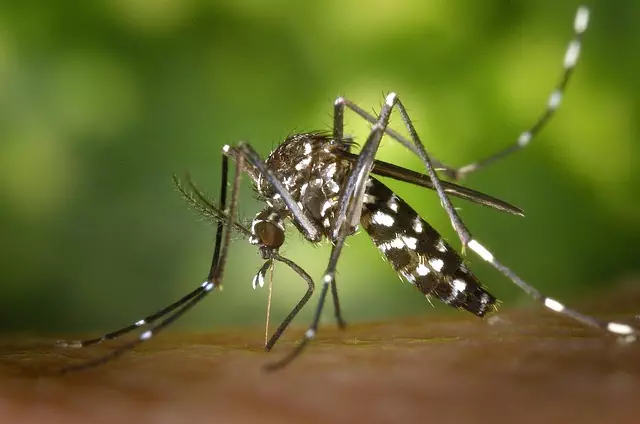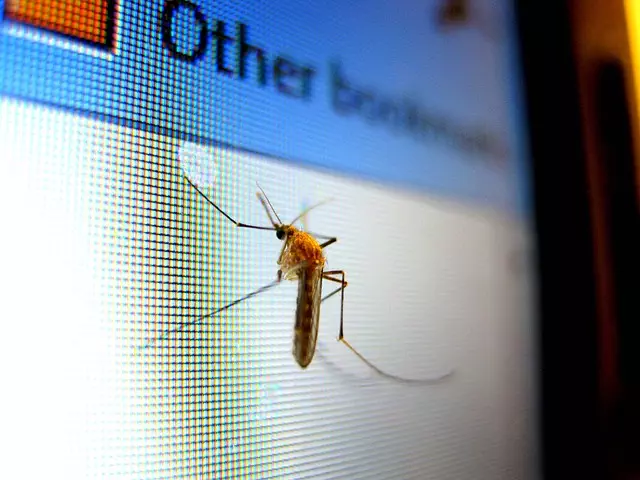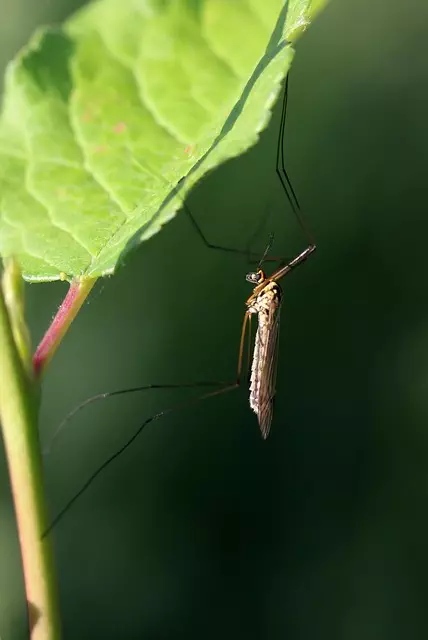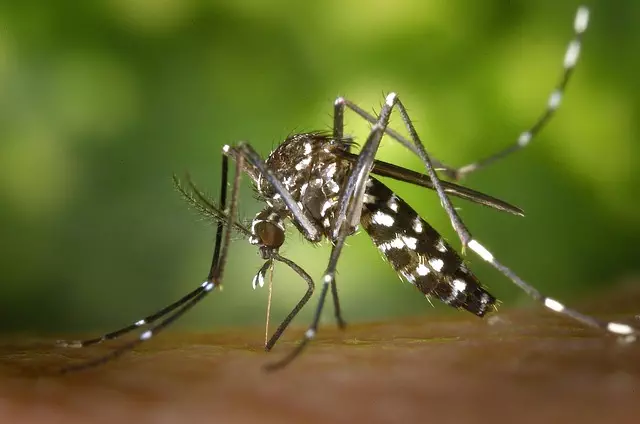Mosquitoes and ticks exhibit distinct behaviors shaped by their environments, attracting them to specific habitats and times. Effective control requires a multi-faceted approach integrating habitat manipulation, personal protections, and professional interventions. While traditional chemical methods are effective, they carry health risks and environmental impacts. Sustainable alternatives include eliminating standing water, using natural repellents, promoting biodiversity, and leveraging technology for targeted surveillance and control. Public health authorities play a crucial role in coordinating efforts, educating communities, and responding to threats. Community involvement through monitoring, clean-up drives, and individual actions amplifies these efforts. Technological advancements like drone surveillance, data analytics, and DNA-based detection are transforming mosquito and tick control into more precise, efficient, and environmentally conscious practices.
Mosquitoes and ticks are more than just nuisances; they play significant roles in local ecosystems, impacting both human health and the well-being of our environment. This article delves into the multifaceted world of mosquito and tick control, exploring traditional methods and emerging environmental-friendly solutions. We analyze patterns and preferences, their ecological impact, and the crucial roles of public health authorities and community involvement. Additionally, we look at technological advancements, seasonal approaches, and future prospects shaping control practices in these persistent pests.
Understanding Mosquito and Tick Behavior: Their Patterns and Preferences

Mosquitoes and ticks are pests with distinct behaviors that influence their distribution and interaction with humans. Understanding their patterns and preferences is crucial for effective mosquito and tick control. Mosquitoes, for instance, are more active during dawn and dusk, when they seek blood meals from birds, mammals, and humans. They are attracted to certain chemicals in sweat and carbon dioxide exhaled by warm-blooded animals, which makes them particularly prevalent in humid and densely vegetated areas.
Ticks, on the other hand, have a slower lifestyle compared to mosquitoes. They remain dormant for extended periods and become active during warmer months when they search for hosts—including humans—to feed on. Ticks are often found in tall grass, under bushes, or in wood piles, waiting for unsuspecting passersby. Their feeding habits and life cycles make them challenging to control, requiring a multi-faceted approach that includes habitat manipulation, personal protective measures, and professional interventions for mosquito and tick control.
The Impact of Mosquitoes and Ticks on Local Ecosystems

Mosquitoes and ticks, though often considered pests, play a significant role in local ecosystems. They are integral parts of the food chain, serving as prey for various birds, reptiles, and mammals. However, their proliferation can lead to imbalances. In excessive numbers, mosquitoes feed on nectar and organic matter, but they also consume the blood of vertebrates, including humans and animals. This behavior can disrupt local avian populations, as birds may compete for mosquito-feeding grounds, altering natural behaviors and habitats.
Ticks, meanwhile, are known vectors for various diseases that impact both wildlife and domestic animals. They feed on the blood of hosts, which can result in nutritional stress and even death for their victims. The presence or absence of these arthropods can thus influence the health and diversity of local animal species. Effective mosquito and tick control is essential to maintaining ecological balance, ensuring the well-being of both native wildlife and human residents.
Traditional Methods of Mosquito and Tick Control

For centuries, communities have been combating mosquito and tick infestations through traditional methods. These tactics often involve chemical applications, such as spraying insecticides, which are designed to kill adult mosquitoes and ticks on contact. This direct approach is effective in reducing pest populations but comes with potential drawbacks. Chemical treatments can be costly and may pose risks to human health and the environment if not used responsibly.
Additionally, traditional methods may only offer temporary relief, as they fail to address the breeding grounds and life cycles of mosquitoes and ticks. To achieve long-term mosquito and tick control, it’s essential to integrate a range of strategies, including eliminating standing water sources where larvae breed, maintaining yard cleanliness, and employing natural repellents. These holistic approaches are more sustainable and promote a healthier environment for both humans and local ecosystems.
Environmental-Friendly Solutions for Effective Mosquito and Tick Management

In the realm of mosquito and tick control, there’s a growing trend towards environmentally-friendly solutions that are both effective and safe. Traditional methods often rely on chemical pesticides, but these can have detrimental effects on non-target species and local ecosystems. As a result, many communities and homeowners are opting for more sustainable alternatives. One such approach is the use of natural predators like bats and birds, which feed on mosquitoes and ticks. Installing bat houses and creating bird-friendly habitats can significantly reduce pest populations without causing harm to these beneficial creatures.
Additionally, organic repellents and traps that utilize essential oils and plant extracts are gaining popularity. Citronella, lemon eucalyptus, and neem oil are examples of natural substances that repel mosquitoes and ticks. These products not only provide an effective barrier against pests but also pose minimal risk to pets and wildlife. Moreover, the use of water features like fountains and ponds can help deter mosquitoes due to their movement and splashing, which disrupts the insects’ landing and feeding behavior. These environmental-friendly strategies offer a balanced approach to mosquito and tick control, ensuring both human health and ecological preservation.
Role of Public Health Authorities in Local Mosquito and Tick Control

Public health authorities play a pivotal role in local mosquito and tick control efforts, acting as guardians of community well-being. Their multifaceted approach includes surveillance and monitoring of mosquito and tick populations, tracking disease transmission, and implementing targeted control measures. Through regular inspections, these authorities identify breeding grounds, such as stagnant water bodies, and educate residents on prevention strategies like eliminating standing water and using insect repellents.
Beyond direct interventions, public health departments collaborate with local governments and communities to promote best practices in mosquito and tick control. This collaboration involves raising awareness about the risks associated with these pests, advocating for environmental stewardship, and ensuring timely responses to emerging threats. By combining scientific expertise, community engagement, and coordinated actions, public health authorities are instrumental in mitigating the impact of mosquitoes and ticks on both individual health and public safety.
Community Involvement: Strategies for Collective Mosquito and Tick Mitigation

In the fight against mosquito and tick control, community involvement is a powerful weapon. Collective efforts can significantly mitigate the presence of these pests in shared spaces. One effective strategy is neighborhood watch programs where residents take turns monitoring and reporting breeding grounds, such as stagnant water bodies or overgrown vegetation. This collaborative approach not only fosters a sense of shared responsibility but also ensures prompt action against potential hazards.
Additionally, community-led clean-up drives and regular maintenance of public areas can significantly reduce mosquito and tick habitats. Encouraging residents to remove standing water from their properties and properly dispose of waste can disrupt the life cycles of these insects. By combining individual actions with collective initiatives, communities can create an environment that is less hospitable to mosquitoes and ticks, thereby enhancing overall public health and safety.
Technological Advancements in Mosquito and Tick Surveillance and Control

Technological advancements have significantly revolutionized mosquito and tick control methods, offering more precise and effective surveillance strategies. Traditional techniques, such as manual inspections and random sampling, are being supplemented by innovative tools like remote sensing, geospatial mapping, and real-time data analytics. These technologies enable authorities to identify high-risk areas and hot spots more efficiently, allowing for targeted and strategic applications of control measures.
For instance, drone surveillance can cover vast territories quickly, detecting mosquito breeding grounds or tick-infested regions with remarkable accuracy. Geospatial mapping software assists in analyzing environmental factors that influence pest distribution, helping professionals design tailored control plans. Additionally, the integration of citizen science apps encourages public participation, enabling communities to contribute data on mosquito and tick activity, further enhancing surveillance efforts for more effective local mosquito and tick control strategies.
Seasonal Approaches to Local Mosquito and Tick Prevention

In the ever-changing seasons, effective mosquito and tick control require tailored approaches. During warmer months, mosquitoes proliferate, necessitating proactive measures like eliminating standing water—a breeding ground for larvae—and using repellents with DEET or picaridin. Regular maintenance of outdoor areas can significantly reduce mosquito populations. Conversely, while ticks are less active in colder seasons, they remain a concern during spring and fall. Property owners should focus on sealing entry points and applying seasonal treatments that target adult ticks, especially in grassy and woody areas where they hide.
For comprehensive mosquito and tick control, integrating multiple strategies is key. This includes combining chemical interventions with organic methods like planting citronella or marigolds to deter insects naturally. Community efforts, such as organized fumigation or public education campaigns, can also be effective. By adopting these seasonal approaches, residents can enjoy outdoor spaces more safely, minimizing the risk of mosquito and tick-borne diseases.
Future Prospects: Innovations Shaping Mosquito and Tick Control Practices

As technology advances, innovative solutions are emerging to enhance mosquito and tick control practices. DNA-based detection methods and genetically modified insects are being explored as environmentally friendly alternatives to traditional chemical pesticides. These cutting-edge approaches offer precise targeting of specific species, reducing potential harm to non-target organisms and ecosystems.
Additionally, the integration of drones and AI-powered surveillance systems is revolutionizing pest management. Drones equipped with high-resolution cameras and sensors can swiftly identify and map mosquito breeding grounds or tick-infested areas. This real-time data enables more effective deployment of control measures, ensuring better protection for communities and outdoor recreational spaces.
